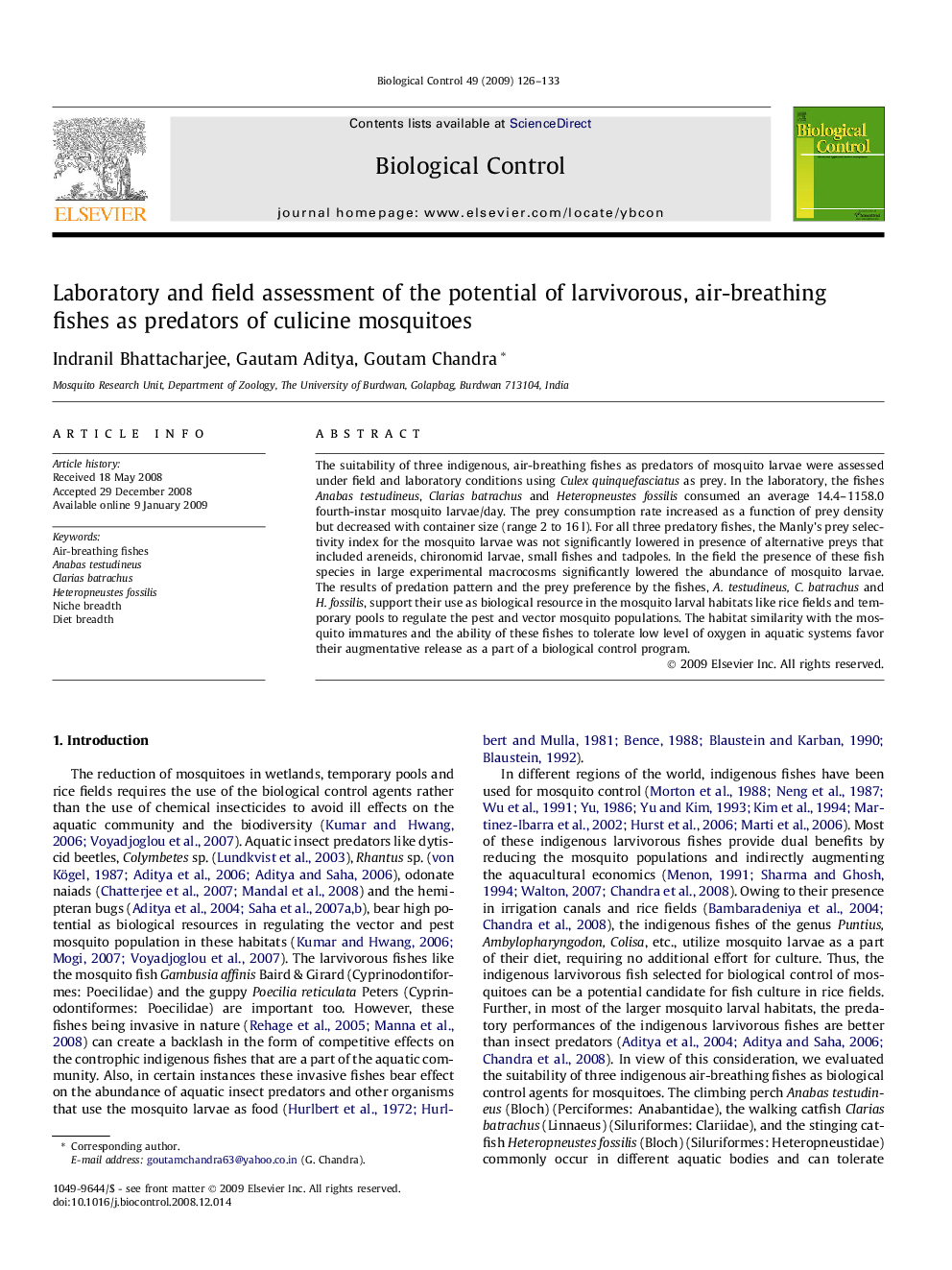| کد مقاله | کد نشریه | سال انتشار | مقاله انگلیسی | نسخه تمام متن |
|---|---|---|---|---|
| 4504838 | 1321113 | 2009 | 8 صفحه PDF | دانلود رایگان |

The suitability of three indigenous, air-breathing fishes as predators of mosquito larvae were assessed under field and laboratory conditions using Culex quinquefasciatus as prey. In the laboratory, the fishes Anabas testudineus, Clarias batrachus and Heteropneustes fossilis consumed an average 14.4–1158.0 fourth-instar mosquito larvae/day. The prey consumption rate increased as a function of prey density but decreased with container size (range 2 to 16 l). For all three predatory fishes, the Manly’s prey selectivity index for the mosquito larvae was not significantly lowered in presence of alternative preys that included areneids, chironomid larvae, small fishes and tadpoles. In the field the presence of these fish species in large experimental macrocosms significantly lowered the abundance of mosquito larvae. The results of predation pattern and the prey preference by the fishes, A. testudineus, C. batrachus and H. fossilis, support their use as biological resource in the mosquito larval habitats like rice fields and temporary pools to regulate the pest and vector mosquito populations. The habitat similarity with the mosquito immatures and the ability of these fishes to tolerate low level of oxygen in aquatic systems favor their augmentative release as a part of a biological control program.
Journal: Biological Control - Volume 49, Issue 2, May 2009, Pages 126–133